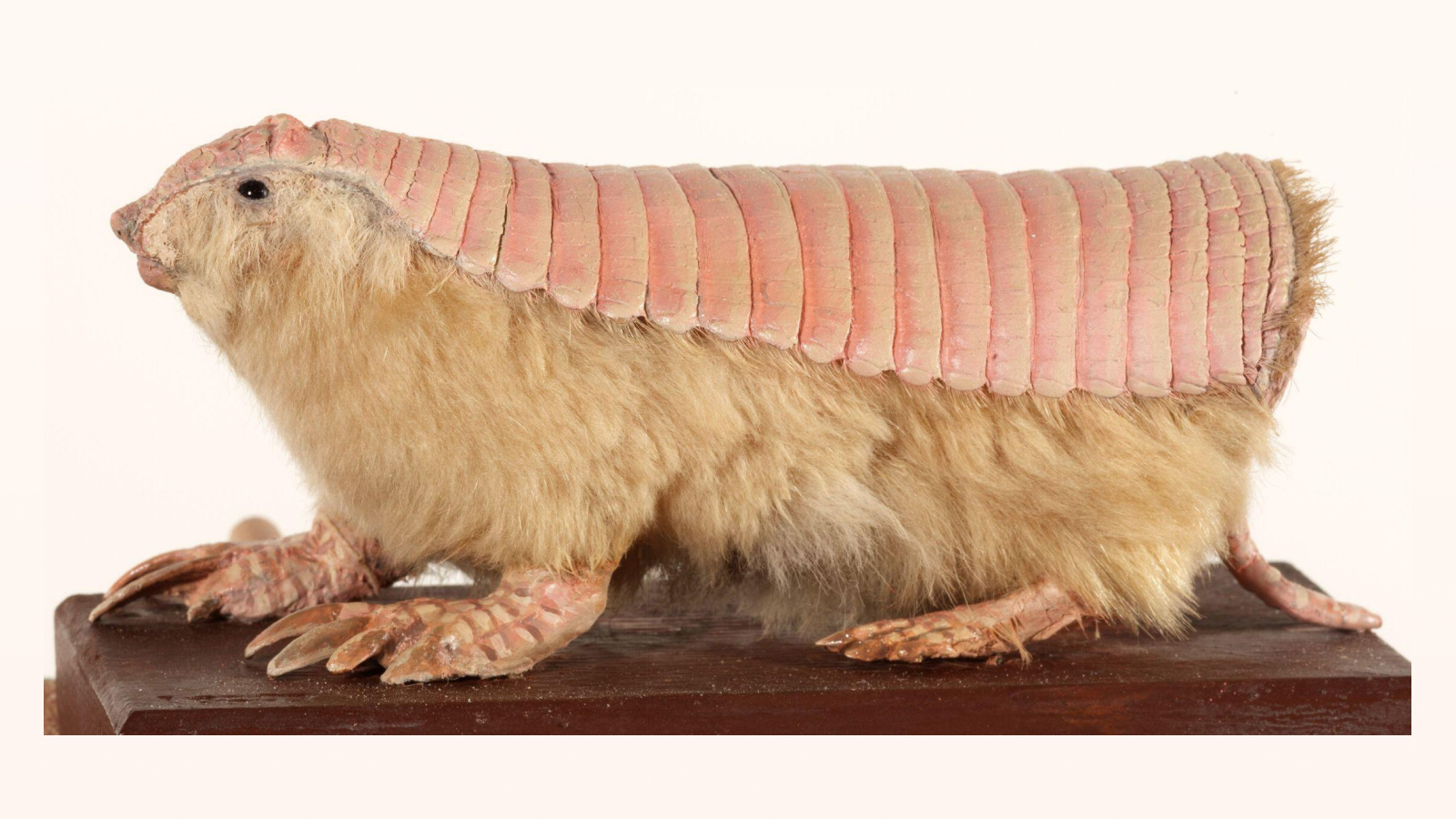'Peculiar' pink fairy armadillos have a weird double skin not seen in any other mammal
Pink fairy armadillos, which are just 6 inches long, appear to have evolved a strange double skin millions of years ago as they moved underground in response to the climate becoming more arid.

Pink fairy armadillos — the smallest species of armadillo — have a unique double skin, scientists have revealed.
In a new study, published Dec. 19, 2023 in the Journal of Zoology, researchers studied the microscopic anatomy of sections of pink fairy armadillo (Chlamyphorus truncatus) skin with and without osteoderms — bony plates embedded in the skin. In doing this, they uncovered the unique and "peculiar" second layer of skin under the animal's dorsal shield.
"As strange as it may seem, the animal possesses a double layer of skin," lead author Cecilia Krmpotic, a biologist with the Argentine National Scientific and Technical Research Council, told Live Science. "The outermost layer, housing cornified scales [in which dead tissue forms a thickened, protective layer] and osteoderms, acts as a mantle or covering over the inner layer, which displays an abundant and fine white fur. This double skin is a unique feature among mammals."
In contrast, the 19 other known species of armadillo have a single layer of skin on their backs, which is covered by the scales and osteoderms that form the animals' armor.
Pink fairy armadillos are just 6 inches (15 centimeters) long and weigh 3.5 ounces (100 grams). They are native to central Argentina, where they live in burrows excavated by their proportionally enormous claws. Researchers think they eat mostly ants and other insects. However, their habits are poorly understood, and most captive specimens have perished in a matter of days.
Related: Shimmering golden mole thought extinct photographed and filmed over 80 years after last sighting
The protective armor of a pink fairy armadillo is typically divided into two zones: one shield covers the head, while a dorsal shield covers the rest of the body, Krmpotic said. The dorsal shield is further divided into a pectoral buckler, covering the upper back — made up of a series of moveable bands that enables the animal to retain flexibility — and a pelvic buckler covering the posterior region.
Sign up for the Live Science daily newsletter now
Get the world’s most fascinating discoveries delivered straight to your inbox.
The armor serves both to protect against potential predators and to support the animal's underground lifestyle.
While their larger relatives spend significant amounts of time at the surface, pink fairy armadillos live mostly underground.
"The evolution towards a completely subterranean lifestyle in the fairy armadillo's ancestral lineage is estimated to have taken place between 32 and 17 million years ago," Krmpotic said. This shift was driven by changing environmental conditions that led to more arid ecosystems in southern South America, she added.
The structure of pink fairy armadillos' epidermis, or skin, with scales is similar to that seen in juveniles from other armadillo species, where the scales are still developing.
Its unique external characteristics are likely an adaptation to a life spent digging through sandy soil. "The flexibility and lightness of the dorsal shield enable it to adapt to the shape of the tunnels," Krmpotic said.
The pelvic buckler is particularly suited to this lifestyle. "The osteoderms forming the pelvic buckler tend to fuse with each other and with the pelvic girdle and sacrum [the fused vertebrae between the pelvic bones]. The pelvic buckler acts as a piston, compacting sediment in the rear part of the tunnels as it advances," Krmpotic said.
As unique as it is, the armadillo’s body covering appears to be similar to that of other subterranean mammals and has highly flexible hairs that appear to help it move through its underground tunnels.

Richard Pallardy is a freelance science writer based in Chicago. He has written for such publications as National Geographic, Science Magazine, New Scientist, and Discover Magazine.










